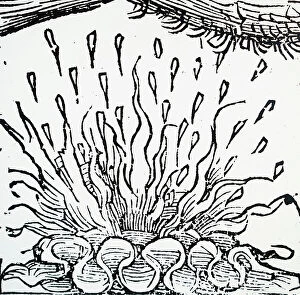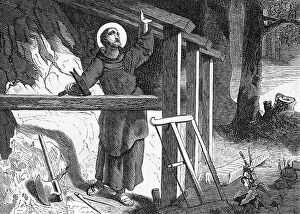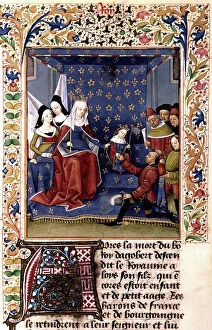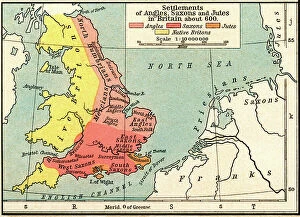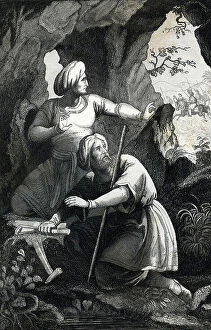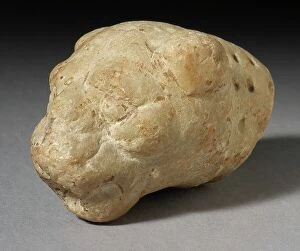7th Century Collection (page 2)
The 7th century was a time of great cultural and artistic development, as seen in the exquisite Coptic art of Egypt
All Professionally Made to Order for Quick Shipping
The 7th century was a time of great cultural and artistic development, as seen in the exquisite Coptic art of Egypt. One remarkable example is a painting on wood depicting Christ and Abbot Mena, showcasing the mastery of this ancient craft. Meanwhile, Saint John Climacus, an influential figure in Christian spirituality, is depicted at the top rung of his Ladder of Heavenly Ascent in a late 12th-century icon. This artwork beautifully captures his spiritual journey and teachings. Moving to Byzantine art, we encounter an iconic representation of Saints Sergius and Bacchus. The intricate details and vibrant colors bring these revered saints to life. From Jerusalem's Mount of Olives, one can marvel at the breathtaking view that has inspired countless pilgrims throughout history. In literature, illuminated texts like the Gospel of St Luke from around 700 AD showcase both religious devotion and artistic skill. Each page tells a story through its meticulously crafted illustrations and calligraphy. Exploring different cultures during this era reveals fascinating artifacts such as an Anglo-Saxon pottery cremation urn found in Lincolnshire. This object provides insight into burial customs during this period. The Lindisfarne Gospels are another treasure from this time – their "Christi autem" page housed at the British Museum showcases intricate designs intertwined with biblical text. Traveling eastward to China brings us face-to-face with a celestial sphere from the Tang Dynasty (681-905 AD). Its colored engravings depict astronomical knowledge combined with artistic flair. Closer to home lies West Stow Country Park and Anglo-Saxon Village in Bury St Edmunds – an immersive experience allowing visitors to step back into Anglo-Saxon times through reconstructed buildings and archaeological finds. From Asia to America, ancient ruins tell stories spanning centuries. Anasazi Ruins' Square Tower House within Mesa Verde National Park dates back between 600 AD and 1300 AD – offering glimpses into the lives of these ancient inhabitants.
















